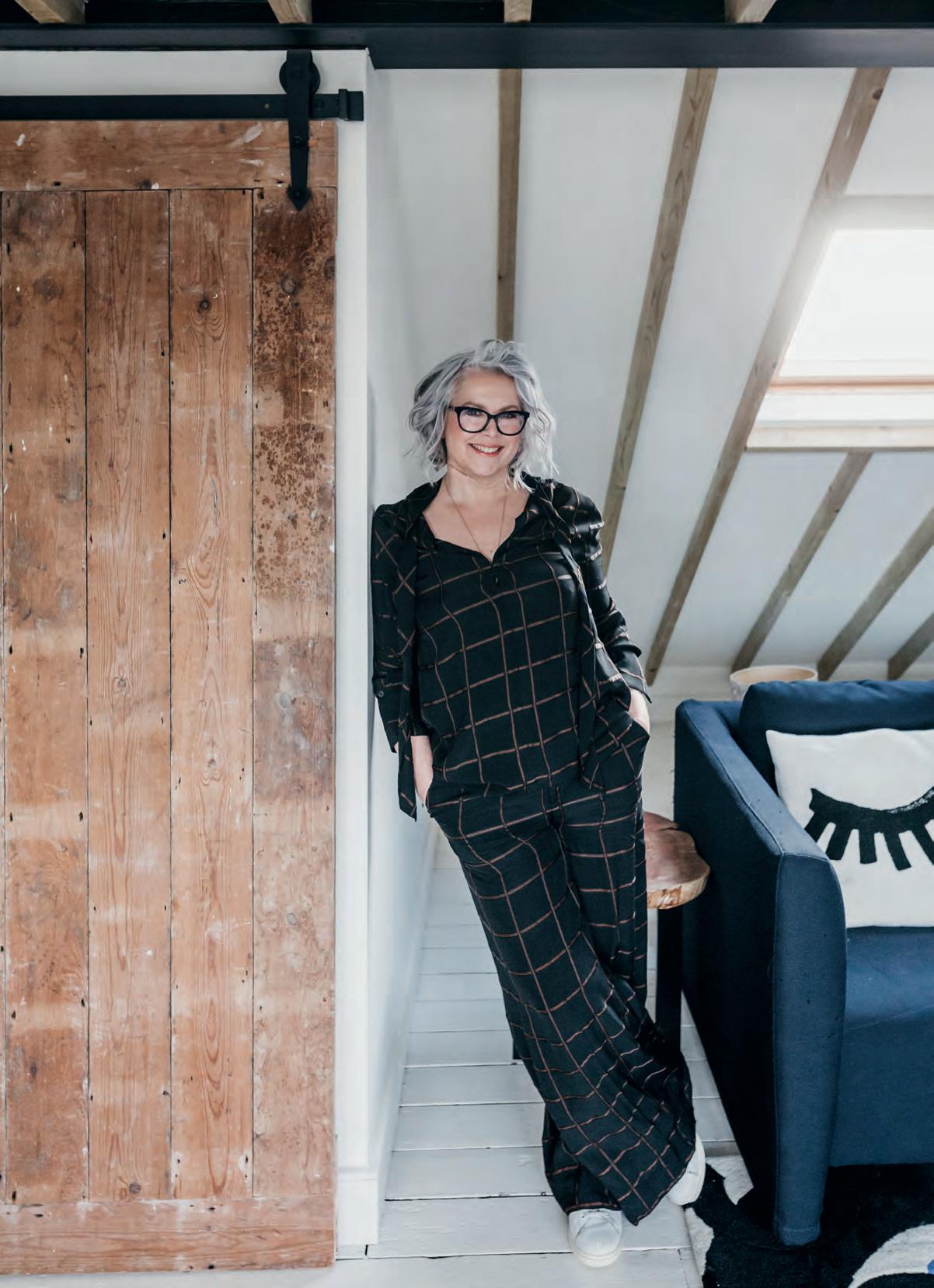
9 minute read
MAD ABOUT
R O O M F O R I M P R O V E M E N T
Are you mad about your house? Kate Watson-Smyth has launched a course in making your space work for you
Words PENDLE HARTE
Walking into Kate WatsonSmyth’s north London house, I’m immediately struck by how familiar it looks. Not because I’ve been here before, but because – along with more than a quarter of a million other followers – I’m used to seeing bits of it on instagram. This much-photographed house is a living example of how to achieve successful design, and now Watson-Smyth, a journalist and blogger who has become a serious design mover, is launching an online course to help the rest of us realise our interiors dreams. As the woman behind the UK’s number one interiors blog, Mad About The House, she’s used to being asked for advice and it’s her honest and relatable tone – as well as her great eye – that makes her such an authority.
The big thing about Kate is that she’s not snooty or dogmatic, and her mission is to demystify the process of decorating your house the way you want it. And because deciding on the way you want it is almost half the battle, that’s what she focuses on with this course, which is mostly about finding your own interior design style. Note ‘your own’ – she’s not advocating recreating her own style (though I’d wager that many of her followers are quite
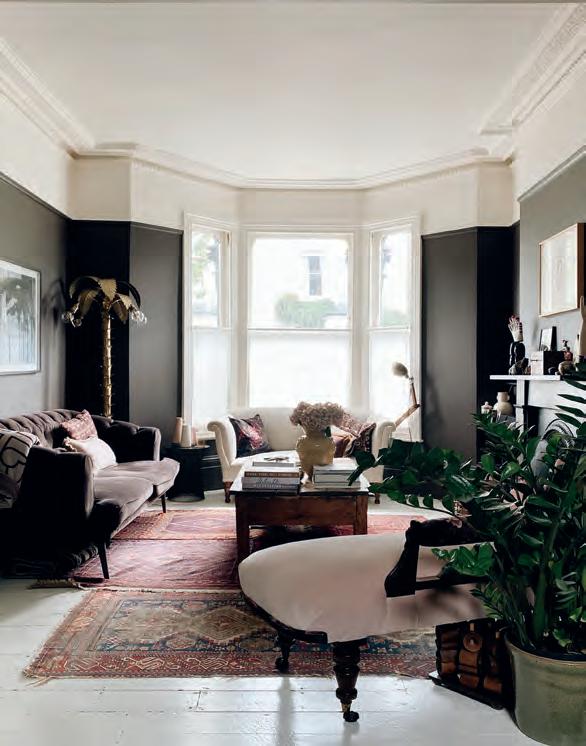
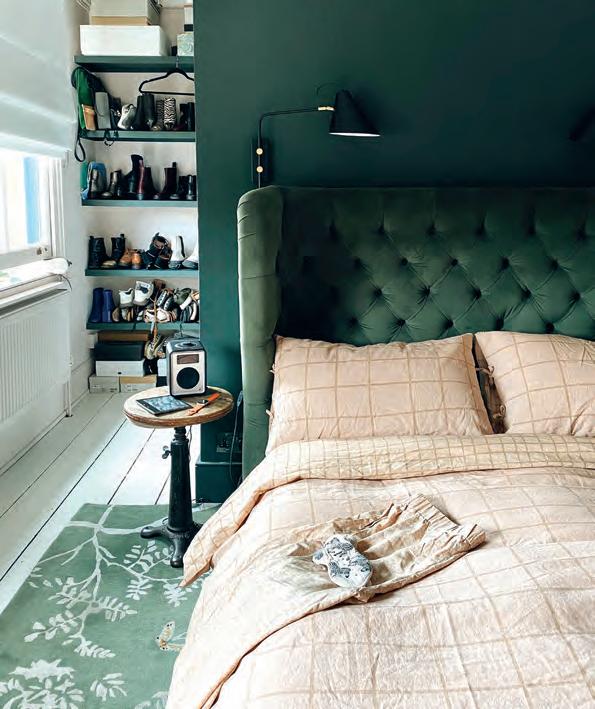
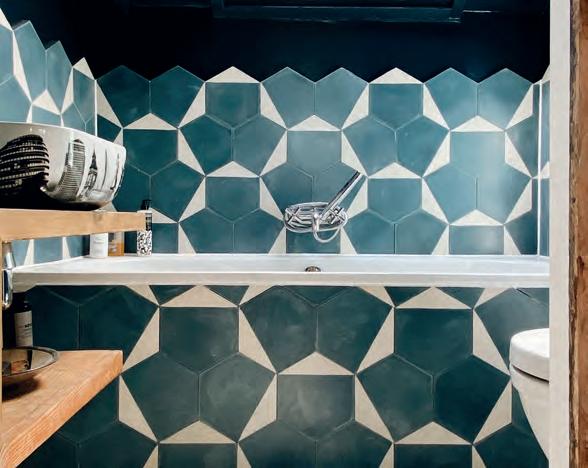
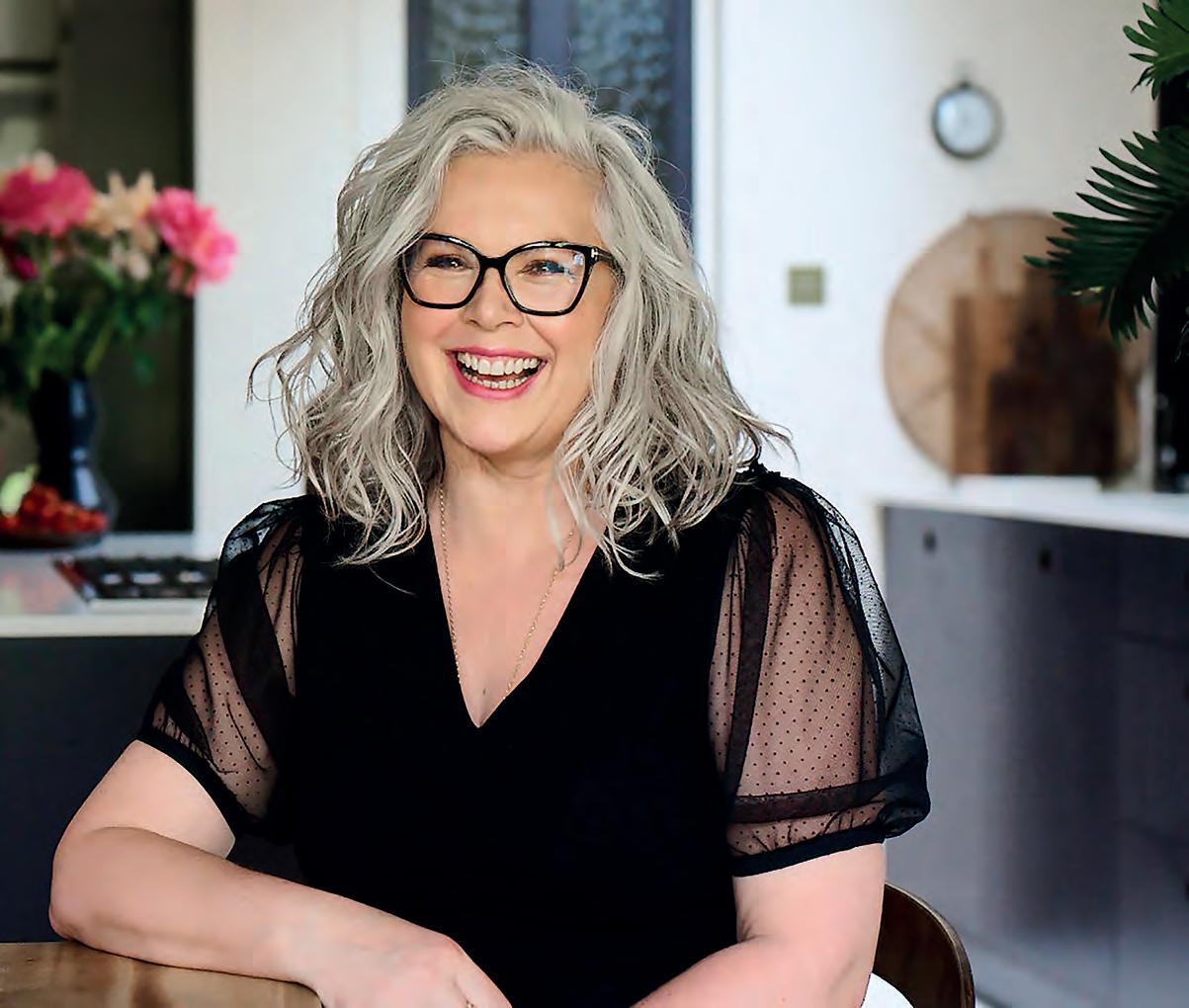
If there’s a dirty great white radiator in the middle of it, what are you thinking? It is not a feature
keen to do exactly that) because her core belief is that living somewhere you love has an enormously positive impact on your overall happiness and wellbeing. But what really makes her so engaging is her warmth and humour. You imagine that even shopping for radiator valves could be fun with her. Sitting in her kitchen (well-designed with a practical layout, intriguingly muted paint colours and fabulous storage, naturally) over coffee, not only do I learn a lot about decorating houses, but I’m also enjoying being entertained.
The course launch’s timing really couldn’t be better, with the idea of wellbeing at home becoming more relevant than ever over the past 18 months. “I think a lot of people have now realised the link between your surroundings and your mental health,” Kate tells me. “In the past, a lot of people would move into a house, slap a colour on the wall, think ‘that’s quite nice’, and then go to work and not see it again in daylight until they were on holiday. Being forced to spend time indoors has led people to think, ‘well actually I hate this room’ and then start to analyse why they hate it. So that’s led to an interest in working out what colours you like and what you use your rooms for. And that’s where my courses and books come in.”
For Kate, the starting point is to ask six basic questions, just as she was taught as a trainee journalist. It’s all about the who, what, why, when, where and how. “It’s about knowing what questions to ask. It’s fine if you like teal blue (though that’s not a colour for me) but you can’t look at a colour in isolation and think, ‘I love it; I’m going to paint it all over my living room’. You have to think, how does that colour make you feel? And if it makes you feel energised, buzzy and ready to start the day, then maybe that’s not the colour for the bedroom. Maybe it’s more the colour for the kitchen. It’s about choosing the colours that you love and then matching the mood of them to the room you need.” And it’s not just colours – it’s important to consider carefully what the purpose of each room actually is. This is something that people often get wrong, she says.
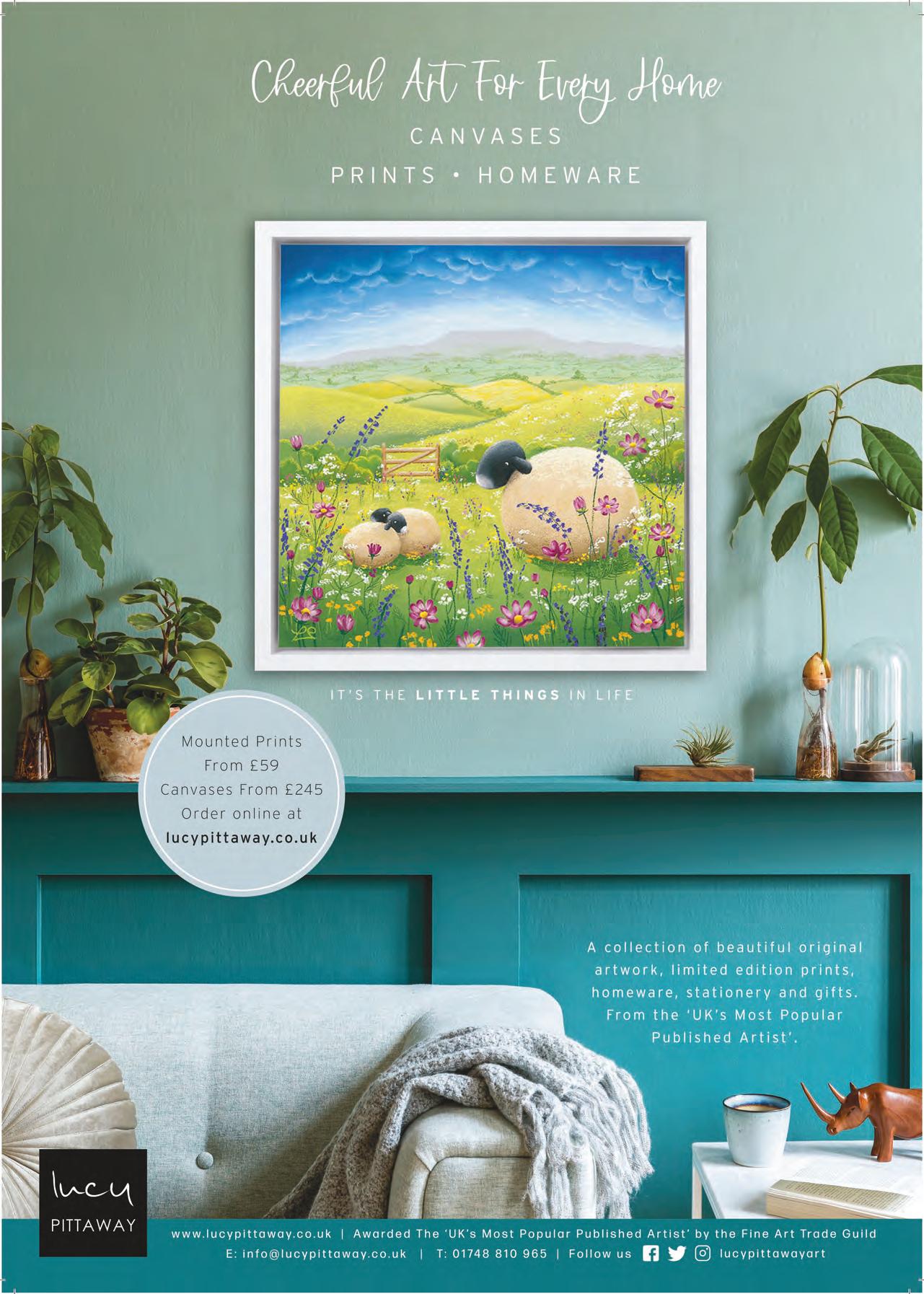
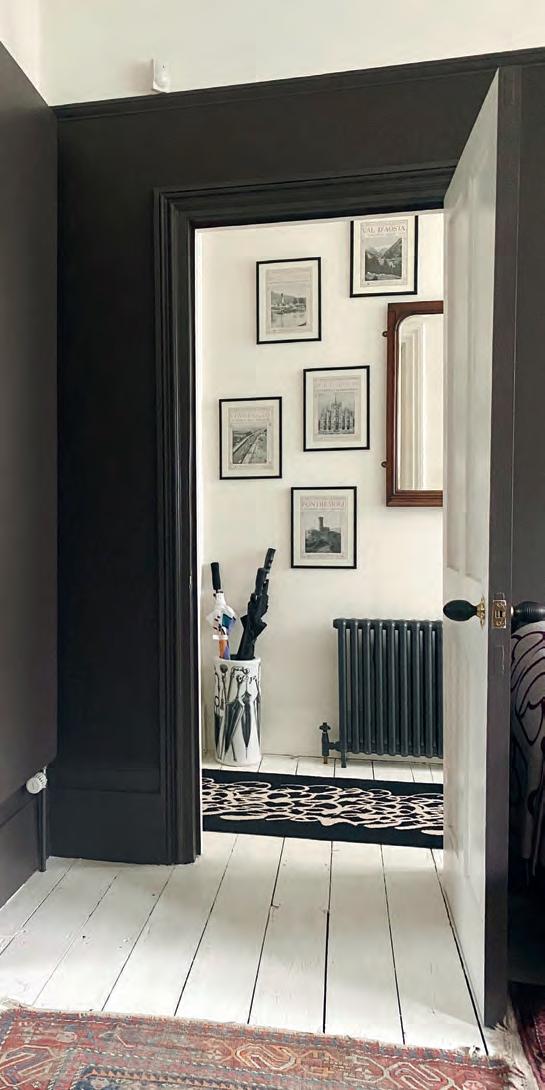
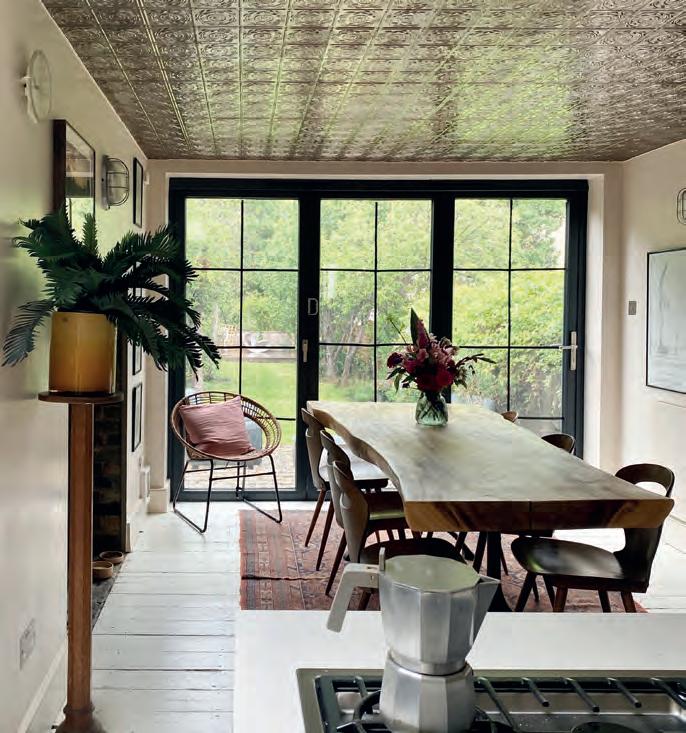
“They don’t think who’s using a room, so it ends up not fit for purpose. Typically, someone might put a beautiful buttoned upright sofa in the sitting room, that nobody wants to sit on because it’s uncomfortable. Then they add an extension on the back of the house and put a squashy sofa in the kitchen, with a telly in there – and from then on nobody ever uses the sitting room again. You have to know what, why and who.”
The course is essentially five hours of video material broken down into manageable 15 minute lessons explaining where to start and all the questions you should ask. “It’s not about being didactic and saying this is how it’s done, it’s saying, if you follow this process you will know how you want to do it – you’ll have learnt how to do it yourself,” says Kate. It’s illustrated with a walk-through of her own very lovely and well-considered house (pictured here) with honest reference to mistakes she has made and things she has changed or would do differently.
Kate and her husband moved into the house more than ten years ago, with their two small sons (now teenagers) and they converted it from two flats back into a single dwelling,
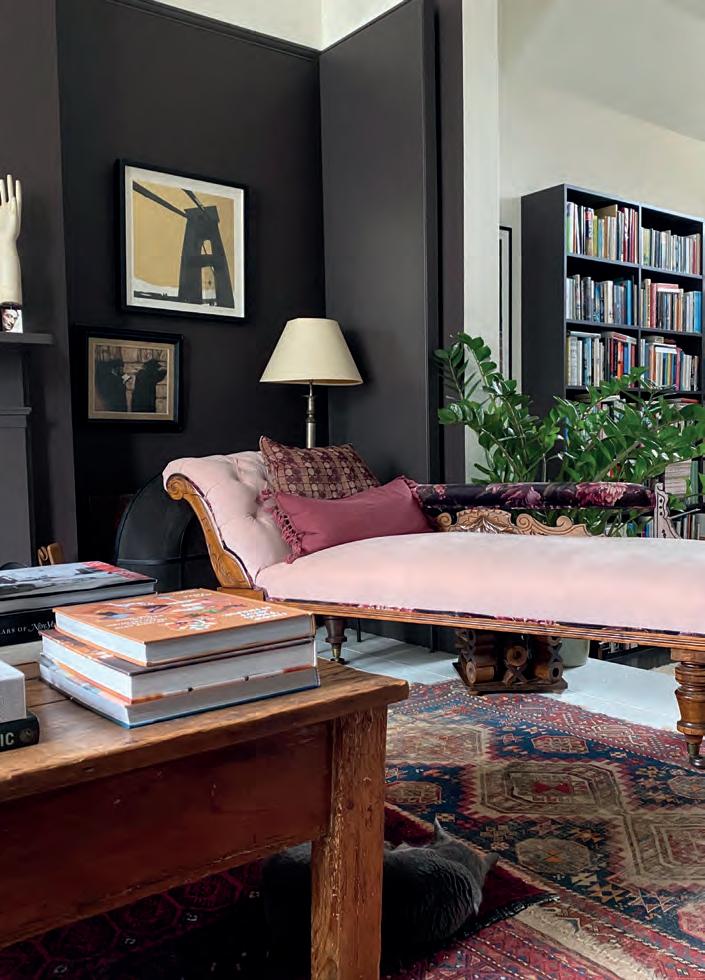
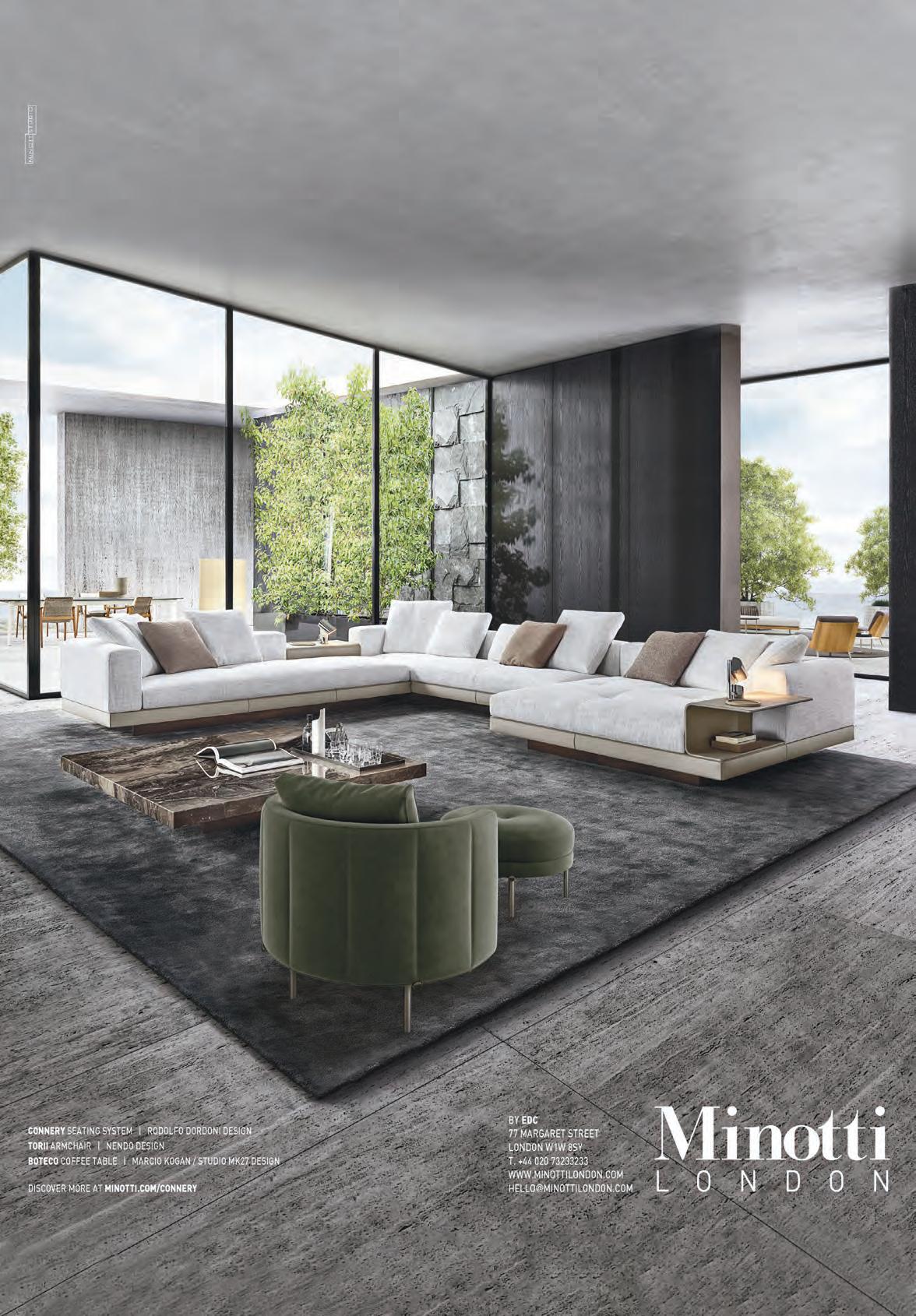
and learnt a lot along the way. Is it finished? A house is never really finished, of course, but “all the rooms are in the right places now.” By this she means the kitchen and bathrooms. “If you get your plumbing rooms in the right place then your approach to bedrooms can be fairly fluid,” she says. The family have all swapped bedrooms a lot as their needs have changed, which is something that many of us don’t think about doing, she points out. “Parents of small children tend to take the master bedroom, because it’s called ‘the master bedroom’. For us, the boys shared the master bedroom when they were little because they had the biggest toys and they could fit them all in there. As they got older, the toys got smaller and they moved into their own rooms. Sometimes the solution is just to move the rooms around.” Now she and her husband do have the master bedroom, where they have devised an ingenious half-wall to partition a dressing room area. For bedrooms, one piece of advice she has is to look at hotels. “They’re often ahead of the curve – look at the industrial style a few years ago, when every pizza joint in town had distressed furniture and tin tile ceilings. Hotels have to get a lot of functions into a small space: a desk, a chair, a place to watch tv, some sort of bathroom, a double bed, everything has to be highly functional in a small space. If you want to build an en suite you can, for example, make the wall ¾ height and put a pane of glass on top so you are borrowing light – hotels do that a lot and there’s no reason why you can’t in your own home.” The major game-changer for interiors in the past decade or so has been Instagram, which Kate loves. “Instagram has been hugely important for interiors, and democratised it. Magazines remain influential and inspirational, but only certain types of houses get featured, while Instagram has allowed everybody to put their houses up. If you live in a one-bedroom flat you’ll be able to find inspiration on Instagram from someone who’s done their one-bed flat beautifully. Magazines are frustrating – they might credit everything except, say, the coffee table – and to find out about it all you can really do is to write to the editor, but they never reply, while on Instagram you can interact. People are doing whole tutorials on how to paint your UPVC windows and everything. It’s made us all more design literate. If you wanted to see what someone’s house looked like in Japan, 30 years ago you’d have had to go to
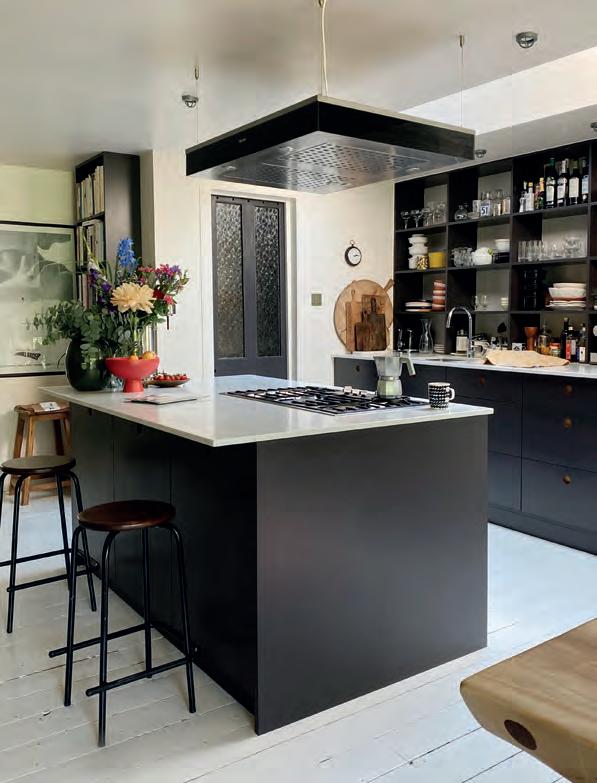
Tokyo, but now you can see how people live and use space instantly.” There’s a chapter in the course on navigating social media, because it’s easy to become overwhelmed with so much inspiration out there. If you have 300 pins on your kitchen board, you’re not going to know what to do.
I have to ask about her bugbears. What mistakes are we all making? Of course there are several. “Hanging pictures too high is one. And the rug island with the coffee table boat – I can’t bear that. Another thing: you have got to paint your radiators to match your walls. I’m not even going to discuss it. If you have gone to all the bother of testing 47 different paints to find the right colour and there’s a dirty great white radiator in the middle of it, then what are you thinking? It is not a feature. Paint it to match the wall and it will disappear.”
And then there are doors. Another chapter of the course is dedicated to doors, which makes total sense when she talks me through all the different ones in her house. “The standard door can take up a lot of space,” she explains. So on the landing there is one that’s cut in half and folds backwards to save space, while the door to her en suite is cut in half and hinged on either side, again saving space. “Plus I’m a huge fan of sliding doors. I can’t believe that nobody talks about doors.”
Another interesting element of the course focuses on relationships. Or, more accurately, on persuading one’s husband to agree to things like pink walls and gold grout. Not that Kate managed to get gold grout past her own husband. “We have developed something over the years called the marital veto. It’s only been used about three times – last time was when we were doing the loft six years ago and I wanted gold grout in the bathroom. He just said no. I cried on Instagram for a bit but now I hate to think that he might have been right.” Still, there’s bound to be an Instagram tutorial for painting your grout, and as Kate keeps saying, you can change the colours of everything as long as you get the layout right. And then you could be mad about your house too.


